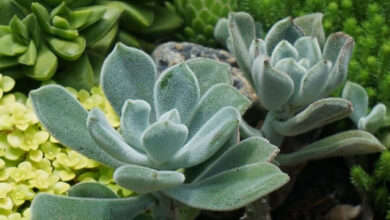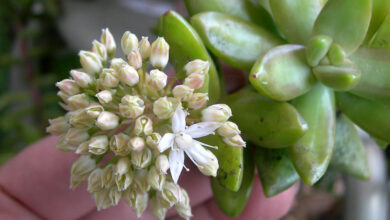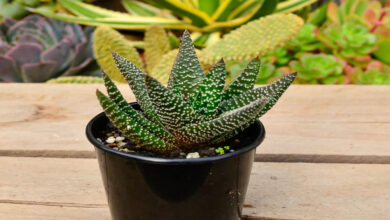Earth Star Plant (Cryptanthus Bivittatus) Care Guidelines
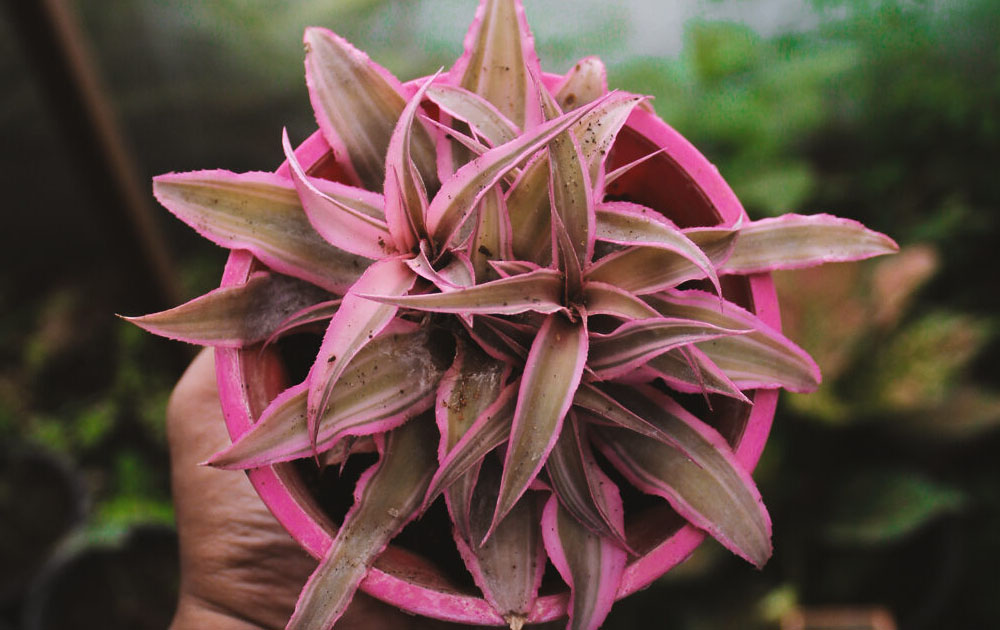
Earth Star Plant also known as Cryptanthus bivittatus, is a species of Cryptanthus from Brazil. This plant is distinguished by its stunning star-shaped leaves, which earned it the name. The leaves are long and slender, and they form a rosette design. It has little white flowers. It is a popular choice for home gardens since it adds much-needed diversity while having a distinct appearance from other plants.
Earth Star Plant overview
Cryptanthus is a genus of approximately 1,200 bromeliads with a wide variety of leaves. Their hues range from dark green to bright pink to crimson, and they can be banded, speckled, solid, or almost any other design.
Earth Star Plants species, like other bromeliads, are planted mostly for their fascinating leaves, although they also produce little yet lovely white or pink blossoms. The plants, however, only bloom once before producing offsets (pups) and dying. Plant bromeliads outside in spring or summer if you reside in the proper climate zone.

Earth Star Plant Care Guidlines
The Earth Star Plant takes relatively little attention. As a result, it is an excellent solution for gardeners who are prone to neglect. Some things are still essential to promote potential growth. Here’s everything you need to know:
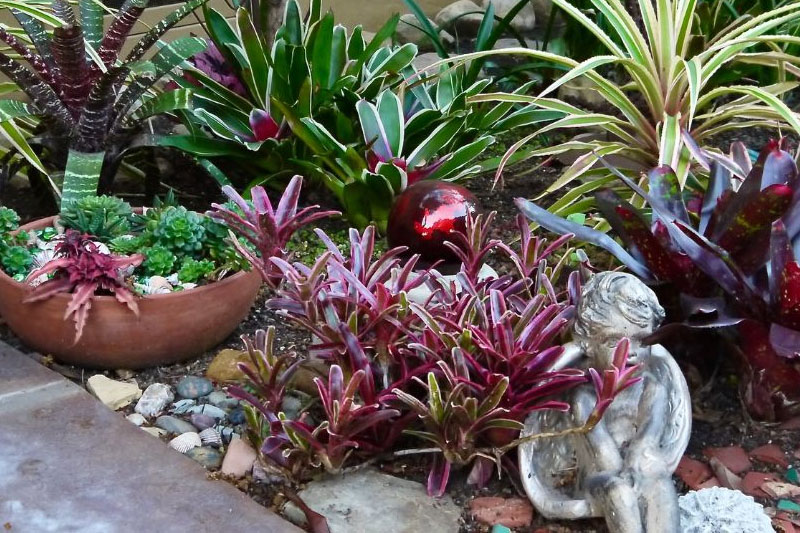
Soil
Soil needs vary depending on the plant, but usually, well-drained soil with a high organic content works well. You can choose between loamy and sandy soil. It must be damp and occasionally wet, with an acidic pH of less than 6.0. A coarse yet water-retaining combination of peat moss, sand, & garden soil would be ideal for the Earth Star Plant.
Watering
These plants require regular watering since they enjoy damp but not saturated soil. However, don’t leave the water in the container for too long, as this plant dislikes being wet. Instead, use the suitable potting mix and drill holes in the edges of the pot to guarantee proper drainage. Never let the potting media entirely dry up before watering again, since this can also induce wilting.
Temperature
This is a tropical plant that grows well in a warm climate. The optimal temperature for growing is between 16 and 27 degrees Celsius (60 and 80 degrees Fahrenheit). Although it is slightly drought-tolerant, don’t put it to the test.
Humidity
One of the most critical aspects for Earth Star Plant growing indoors is humidity. It not only keeps the plant from drying out, but it also aids in growth and development. Maintain humidity levels of about 70% when growing Earth Star Plants indoors.
Another method for increasing humidity around your plants is to keep the plant near a water source. Maintaining humidity can also be accomplished by clustering plants together or by using a humidifier.
Fertilizer
You can spray the plant with a mixture of balanced fertilizer and water. Cryptanthus bivittatus is not sensitive to overfeeding, however, you should only use half of the suggested dose once a month. In the fall and winter, feeding should be done every other month. This will be enough for these low-demanding houseplants.
How to propagate Earth Star Plant?
Propagation of Earth Star Plant (Cryptanthus bivittatus) is quite simple:
- simply wait for the offsets to reach the proper size before planting. Summer is the greatest time for effective propagation since the pup has grown to half the size of its father.
- After removing the pup from the parent, place it on a bed of damp soil and cover the entire pot with plastic to keep all the humidity inside. Allow a month for the first indications of growth to appear.
- Seeds can also be used to reproduce the plant, although the chances of germination are limited, and it takes longer to reach maturity.
- Note: The offsets are the preferred technique.
Earth Star Plant Potting and Repotting
When potting, choose a little larger pot than you believe you need. These plants grow swiftly and will quickly overrun a tiny pot. This plant is also sensitive to standard potting soil. They frequently result in impaired growth or health issues later on. The simplest option is to purchase ordinary orchid potting soil. It is rich in peat, sphagnum moss, and other organic elements. Just make sure the end product is a well-draining potting mix with some moisture retention.
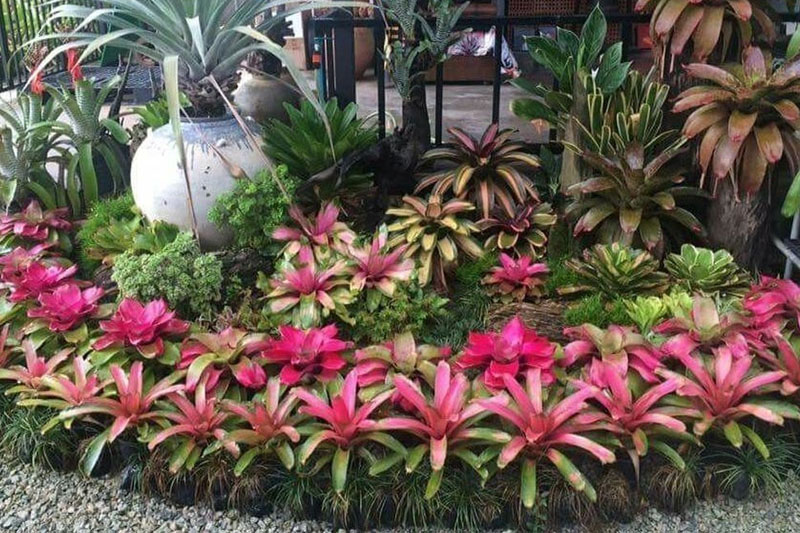
When the plant has outgrown its present container (typically after two or three years) or the soil becomes dry and compacted, it is time to repot. When repotting, use a potting mix specifically developed for Bromeliads. Choose a pot that is one size larger than the present pot. Fill it with potting soil and carefully lower the root ball into its new home. Take extra care with the roots since they are quite sensitive.
What are the common issues of Earth Star Plant?
Changing Colors, dying flowers, drooping plants, papery leaves, bad smells, attacks by insects, and pests are some common issues with Earth Star Plant.
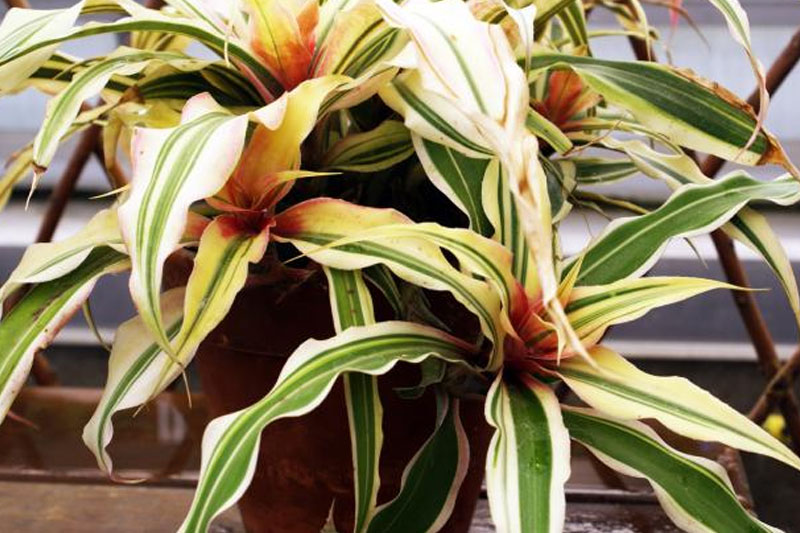
Earth star plants are beautiful when they are healthy, but they can suffer from a few issues whether they grow indoors or outside. Inspect your bromeliad on a regular basis to check for the following issues:
Dying flower
A spent bloom is natural and indicates that the mother plant’s life cycle is nearing completion. You can discard the bloom by removing it with a sharp, sterilized cutting instrument. The plant now has more energy to create pups.
Changing Colors
There are various causes for browning bromeliad leaves. It’s possible that the mother plant has reached the end of its life cycle and is dying. If the pups surrounding the mother plant appear healthy, this is most likely the case.
Fresh leaves turned into brown or tanned leaves. Browning can also be caused by:
- A browning plant may indicate that the air is excessively dry.
- Brown, mushy leaves might indicate that the medium is excessively damp.
- Leaf spots can also be identified by brown, limp leaves.
Papery Leaves
Heat and dryness can cause the leaves to twist and become papery.
Plant drooping
If the plant does not receive enough light, it will droop and fade. Wilting leaves may also indicate root rot.
Diseases and pests
These plants are rarely affected by insects or diseases, but they may succumb to rust, powdery mildew, mealybugs, or scales. To keep these pesky pests at bay, spray the foliage with an insecticidal or organic neem oil solution.
Note: Overwatering can cause infections and damage the roots and foliage.
Important questions to know
In this post, some important questions about the Earth star plant are discussed with suitable answers.
Is it simple to grow Earth Star Plant?
Earth Star Plants, despite their reputation for being difficult to cultivate, is a terrific way to cherish a pot or garden of attractive and varied leaves.
How do you plant Earth star pups?
The offsets of the Earth Star are referred to as “pups.” If you plant these pups when they are about one-third the size of their parent plant, you can establish a new plant from them. Simply twist and pull to remove them. Plant the pups in a container with ordinary bromeliad potting mix. Retain the soil wet and the container covered with plastic to keep the humidity inside. In approximately a month, your pup should begin to develop.
How long does Earth star plant live?
These plants have a three-year life cycle from pup to blooming plant.
Why do the leaves of the Earth star plants have dull color?
When the leaves of Earth star plants lack vibrant color, it means they are not receiving enough sunlight.
How often should you water your Earth star plant?
Never let the soil dry out. Water more frequently in the spring and summer than in the fall and winter since these plants require more water throughout the growing phase. However, regardless of the season, never allow the soil to dry out.
Note: You can also benefit by reading Succulent propagation time lapse guide


